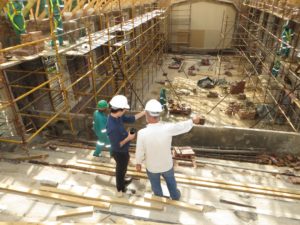
How Is The After-Repair Value Determined for a Hard Money Loan?
Real estate investments frequently need a financial boost to reach their full potential and restore assets to their former grandeur. Hard money loans have become famous among investors looking for quick access to real estate financing. However, these loans have unique complexities, especially when determining the after-repair value (ARV).
Hard money loans must be approved and evaluated; the ARV is critical in determining the loan amount. To achieve accurate and impartial appraisals of property values, both borrowers and lenders involved in complex financing must understand how the ARV is determined. The hard money lenders in Maryland understand the importance of transparency between lenders and borrowers.
Understanding this crucial element will enable investors to navigate the real estate financing landscape more confidently and clearly, opening up a world of chances to turn distressed properties into profitable endeavors.
In this article, journey with us as we delve into the exciting realm of hard money loans and examine how after-repair value is determined.
Contents
What is the after-repair value?
A property’s estimated replacement value (ARV) is determined when all necessary renovations have been performed and it is ready to be resold, refinanced, or rented. A real estate investor must be proficient in estimating the costs of repairs and renovated values for troubled commercial and investment properties. As a general guideline, always count higher when estimating repair costs. Even if you want to perform part of the repairs yourself, include the expenses of all repairs in your initial budget so that you are prepared in case any repairs are more extensive or expensive than anticipated.
To determine accurate ARVs for your properties to show to your hard money lender, it is crucial to conduct research and learn about the local market and local repair costs. Additionally, your lender will ask for their appraisal as part of their due diligence so that they can compare it to the ARV you offer. Hence, it’s crucial to make yours as precise as you can.
How is the after-repair value determined?
Calculating the ARV of a home can be tricky, but a few tips can help you achieve an accurate estimate.
The formula for estimating a property’s after-repair value (ARV) is as follows:
ARV = Current Value + Renovation Value
The current value is the property’s estimated market value in its current state. You can calculate this value by looking into previous sales of comparable homes or speaking with real estate professionals.
The value of renovations is the anticipated increase due to the property’s repairs, renovations, or enhancements. The cost of the improvements usually establishes this value and its possible impact on the property’s market value. You can determine this from contractor quotations, historical data, or real estate market experience.
You can calculate the estimated ARV of the property by adding the current value and the value of renovations. It’s crucial to remember that this formula is a simplified approach, and the accuracy of the ARV estimate may vary depending on factors including market conditions, location, property attributes, and the quality of renovations made.
Also, using comparable qualities is one method of calculating ARV. Similar properties are recently sold residences in your region that are comparable in size, condition, and characteristics to the property you’re considering. You can find this information online by contacting a real estate agent or visiting your municipality’s assessor’s office.
Once you’ve compiled a list of comparable houses, examine what repairs were made to each home and what it sold for post-repair. This will indicate how much your home is worth if you make the same repairs.
You can also use a capitalization rate to compute ARV. This method considers what the property could rent after repairs and multiplies that figure by 12 to calculate an annual return.
Whichever approach you pick, please consider that what constitutes ARV can change depending on how you calculate it. It’s also crucial to remember that ARV isn’t the same as market value, including broker fees and closing costs.
Importance of Research and Comparison Between Hard Money Lenders
- Interest Rates and Terms
Hard-money lenders often charge higher interest rates than standard lenders. Rates and terms, on the other hand, can vary significantly among hard money lenders. You may get the best interest rates, loan terms, and repayment alternatives by researching and comparing lenders. This helps you obtain financing that aligns with your investment objectives while minimizing costs.
- Loan Amount and LTV Ratio
Different hard money lenders may have different maximum loan amounts and loan-to-value (LTV) ratios. By researching and comparing lenders, you can identify lenders who can supply the loan amount you require based on the property’s valuation and your investment objectives. Choosing a lender whose loan terms correspond to your project’s needs is critical.
- Speed and Efficiency
Hard money loans are noted for faster approval and funding than standard loans. However, the speed and efficiency of different lenders can still vary. By researching and comparing lenders, you can identify those known for their quick response times, efficient processes, and capacity to fund loans swiftly. This is especially important in highly competitive real estate markets where time is of the essence.
Final thought
Understanding after-repair value when purchasing a distressed property is critical, especially for a fix-and-flip investment. It will assist you in determining how much to bid on a project, how much repairs will cost, how much value they will add to the project, and what the future sales price will need to be to profit.
The ARV is a flawed instrument, and it is critical to understand its limitations before commencing the procedure. Still, it can help determine the profitability and costs of a fix-and-flip venture. However, investors should be aware of loan-to-cost (LTC) and loan-to-value (LTV) ratios and how they affect a possible investment project.


